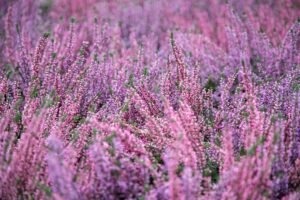

How to Describe People in Norwegian: Physical Descriptions and Personality
Table of Contents
ToggleIntroduction to Describing People in Norwegian
Describing people is essential to learning a new language, and Norwegian is no exception. Understanding how to describe people in Norwegian will improve your conversational skills and provide a deeper insight into Norwegian culture. This comprehensive article will dive into basic vocabulary for describing physical appearances and personality traits and offer guidance on constructing sentences with these descriptions. Additionally, we will explore tips to make your descriptions more authentic and engaging and provide numerous example sentences.
Essential Vocabulary for Describing Physical Appearances
Hair
When discussing hair, it is essential to familiarize yourself with the following terms:
- et hår (a hair)
- kort (short)
- langt (long)
- krøllete (curly)
- blondt (blonde)
- brunt (brown)
- svart (black)
- grått (gray)
- rødt (red)
Example sentences:
- Han har kort svart hår. (He has short black hair.)
- Hun har krøllete rødt hår. (She has curly red hair.)
Eyes
To describe eyes, you can use these words:
- øyne (eyes)
- blå (blue)
- grønne (green)
- brune (brown)
- grå (gray)
Example sentences:
- Hun har store blå øyne. (She has big blue eyes.)
- Han har smale brune øyne. (He has narrow brown eyes.)
Facial Features
To depict facial features, consider using these terms:
- et ansikt (a face)
- et skjegg (a beard)
- en bart (a mustache)
- et smil (a smile)
- fregner (freckles)
Example sentences:
- Han har skjegg og bart. (He has a beard and mustache.)
- Hun har fregner og et stort smil. (She has freckles and a big smile.)
Body Type
Here are some words to help you describe different body types:
- slank (slim)
- muskuløs (muscular)
- tynn (thin)
- lubben (chubby)
- atletisk (athletic)
- rund (round)
Example sentences:
- Han er atletisk og høy. (He is athletic and tall.)
- Hun er slank og middels høy. (She is slim and of average height.)
Height
To talk about height, use the following words:
- høy (tall)
- lav (short)
- middels (average)
Example sentences:
- Hun er veldig lav. (She is very short.)
- Han er middels høy. (He is of average height.)
Age
Age can be described using these terms:
- ung (young)
- gammel (old)
- middelaldret (middle-aged)
- eldre (elderly)
Example sentences:
- Han er en ung mann. (He is a young man.)
- Hun er en eldre kvinne. (She is an older woman.)
‘
Essential Vocabulary for Describing Personalities
Positive Personality Traits
Here are some common positive traits in Norwegian:
- vennlig (friendly)
- tålmodig (patient)
- hardtarbeidende (hardworking)
- morsom (funny)
- omsorgsfull (caring)
- kreativ (creative)
- selvsikker (confident)
- ambisiøs (ambitious)
Example sentences:
- Hun er vennlig og omsorgsfull. (She is friendly and caring.)
- Han er kreativ og selvsikker. (He is creative and confident.)
Negative Personality Traits
These words describe negative traits:
- sint (angry)
- lat (lazy)
- sjenert (shy)
- egoistisk (selfish)
- irriterende (annoying)
- støyende (noisy)
- arrogant (arrogant)
- engstelig (anxious)
Example sentences:
- Han kan være sint og irritert. (He can be angry and irritable.)
- Hun er sjenert og engstelig. (She is shy and anxious.)
Forming Sentences with Descriptions
Using Adjectives and Nouns Together
To form sentences, combine adjectives with nouns. For example:
- Hun har langt blondt hår. (She has long blonde hair.)
- Han er vennlig og hardtarbeidende. (He is friendly and hardworking.)
Positioning Adjectives in a Sentence
In Norwegian, adjectives usually come before the noun they describe:
- Han har blå øyne. (He has blue eyes.)
- Hun er en morsom person. (She is a funny person.)
Using Verbs to Describe People
Verbs can also help you describe people more accurately:
- Han smiler mye. (He smiles a lot.)
- Hun snakker fort. (She speaks quickly.)
Tips for Making Your Descriptions More Authentic
- Use informal tone: Norwegians use informal language in everyday conversation. Try using an informal tone to describe people to make your speech more natural.
- Utilize personal pronouns: Make sure to use personal pronouns like “han” (he), “hun” (she), or “de” (they) when talking about others.
- Please keep it simple: Don’t overcomplicate your descriptions. Stick to basic vocabulary and sentence structures.
- Engage the reader: When describing a story or someone, try to paint a vivid picture using various adjectives and details.
- Use the active voice: Active voice makes your descriptions more engaging and easier to understand.
- Keep it brief: Be concise, as overly long descriptions can be challenging to follow.
- Use rhetorical questions: Rhetorical questions can help engage the reader or listener and make them think about the subject more deeply.
- Incorporate analogies and metaphors: Using analogies and metaphors can help convey your descriptions more effectively and creatively.
Conclusion
Describing people in Norwegian is an essential skill to develop as you learn the language. By mastering basic vocabulary for physical appearances and personality traits, and understanding how to form sentences using these descriptions, you’ll be able to engage in more authentic and captivating conversations. Don’t forget to practice and apply the tips mentioned above to make your descriptions sound more natural and engaging.
Sign up for a Norwegian course here to improve your Norwegian level!
If you want to learn Norwegian, you can register for classes here. We look forward to hearing from you and helping you become fluent in Norwegian.





